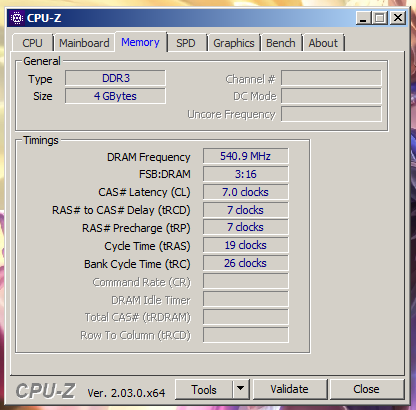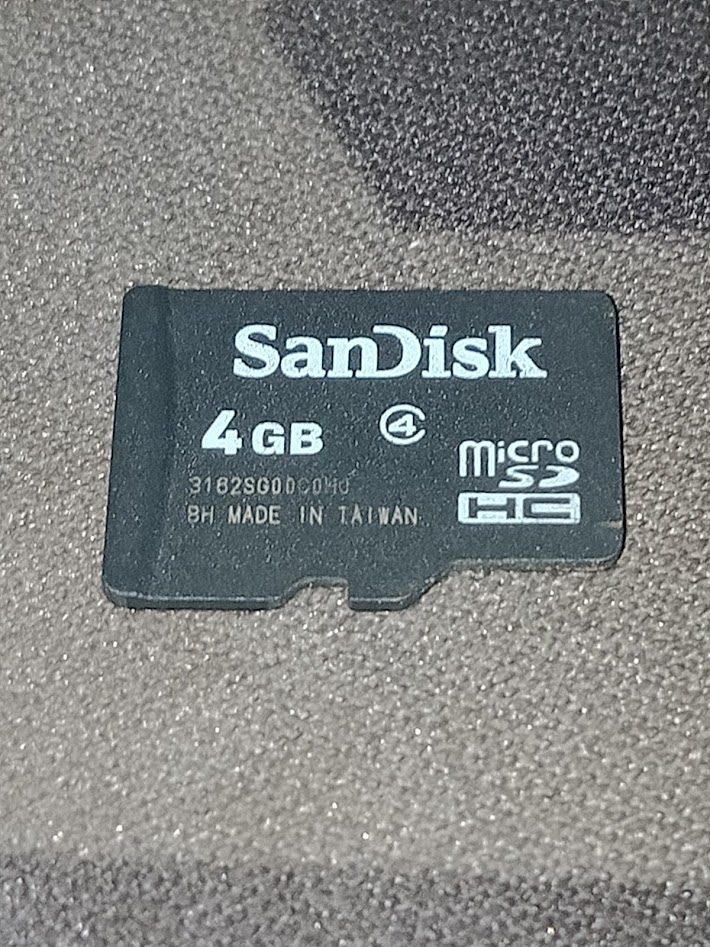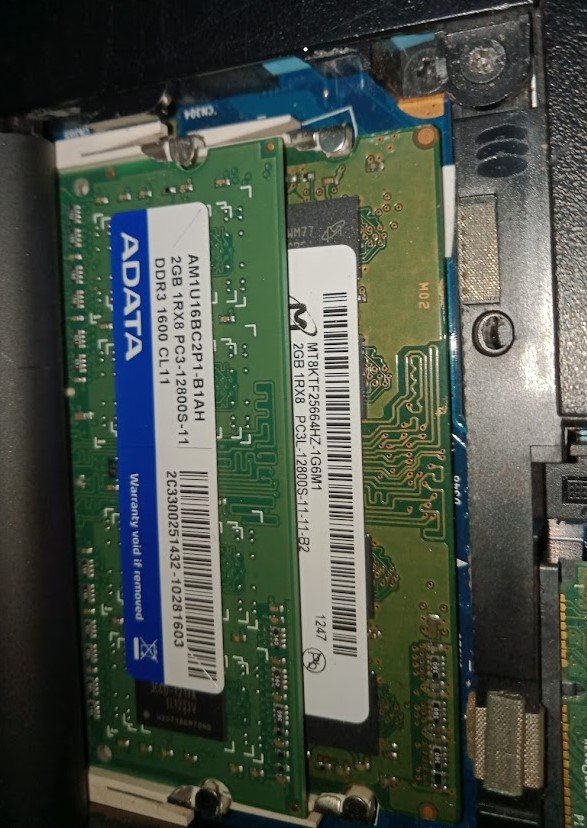Comparing: DDR3 SODIMM 1066MHz [Disk] vs SanDisk MicroSDHC 4GB
In this comparison, we analyze two Disks: DDR3 SODIMM 1066MHz [Disk] and SanDisk MicroSDHC 4GB, using synthetic benchmark tests to evaluate their overall performance. This side-by-side comparison helps users understand which hardware delivers better value, speed, and efficiency based on standardized testing. Whether you're building a new system or upgrading an existing one, this benchmark-driven evaluation offers valuable insights to guide your decision.

DDR3 SODIMM 1066MHz [Disk]
| Type: | Disks |
|---|---|
| Model: | DDR3 SODIMM 1066MHz [Disk] |
| Capacity: | 2GB |
| Interface: | DDR3 |

SanDisk MicroSDHC 4GB
| Type: | Disks |
|---|---|
| Model: | SanDisk MicroSDHC 4GB |
| Capacity: | 4GB |
| Interface: | Standard SD |
Specification Comparison Table
This specification comparison presents technical details of several devices or components to help you understand the key differences between each option. Use this table as a reference to determine which device best suits your needs.
| Specification | DDR3 SODIMM 1066MHz [Disk] | SanDisk MicroSDHC 4GB |
|---|---|---|
| Brand | - | SanDisk |
| Format | RAM Disk | MicroSDHC |
| Capacity | 2GB | 4GB |
| Interface | DDR3 | Standard SD |
Submission Comparison Table
This submission comparison table displays the number and details of benchmark data submissions from various devices or components. This information helps you understand the performance based on the benchmarks that have been tested, as well as providing an overview of the consistency and popularity of the available benchmark results.
| No. | Benchmark Software | DDR3 SODIMM 1066MHz [Disk] | SanDisk MicroSDHC 4GB |
|---|---|---|---|
| 1 | ATTO Disk Benchmark - 64M |
Read: 1020.00 MB/s Write: 1080.00 MB/s |
Read: 19.13 MB/s Write: 4.82 MB/s |
| 2 | Cross Platform Disk Test |
Read: 658.01 MB/s Write: 265.28 MB/s |
Read: 18.71 MB/s Write: 4.16 MB/s |
| 3 | CrystalDiskMark |
Read: 746.24 MB/s Write: 828.18 MB/s |
Read: 19.50 MB/s Write: 5.66 MB/s |
Submission Comparison Chart
This chart visualizes the benchmark scores comparison between two hardware devices based on submitted data.
Media Gallery
A collection of photos of tested hardware. These images can help you identify the physical form, model, and variant of the hardware in question. These photos are from our own documentation, and if they are not available we may not be able to document them.
About Hardware DDR3 SODIMM 1066MHz [Disk]
DDR3 SODIMM 1066MHz is a third-generation memory module with a speed of 1066MHz that is commonly used in laptops and small devices. With the SODIMM form factor, these modules are often the standard choice for mobile computing systems, serving as the main memory for running operating systems, applications, and light to medium multitasking processes.
However, in this particular experiment, two 1066MHz DDR3 SODIMM modules from Micron and ADATA (2GB capacity each) were uniquely configured as a RAMDisk, a temporary storage space that uses RAM capacity to simulate a storage drive with much higher access speeds than SSDs or HDDs.
The 1066MHz DDR3 SODIMM-based RAMDisk test was conducted on an HP 1000 1b05au laptop device, powered by an AMD E1-1200 processor. The system is equipped with a 2x2GB DDR3 SODIMM 1600MHz RAM configuration, but due to processor architecture limitations, the memory only runs in single channel mode with an effective speed of 1066MHz. The operating system used is Windows 7, and to create and manage the RAMDisk, two popular applications, SoftPerfect RAMDisk and ImDisk Virtual Disk Driver, were used. The configured RAMDisk size was 2GB, utilizing some of the available RAM capacity.
Even though the device specifications are old and have limited memory bandwidth, the RAMDisk configured in this system was still able to show excellent performance in the read and write speed benchmarks. Based on tests using CrystalDiskMark, the read speed reached 746.24 MB/s, while the write speed touched 828.18 MB/s. In a follow-up test using ATTO Disk Benchmark with a 64MB block size, the read speed increased to 1020.00 MB/s, and the write speed reached 1080.00 MB/s. These results prove that even on older systems, RAMDisk configurations are still capable of delivering very high I/O performance, far surpassing conventional storage such as HDDs or even some SSDs.
Analysis
The results show that a 1066MHz DDR3-based RAMDisk is still capable of delivering data transfer speeds on par with entry-level NVMe SSDs, even outperforming many SATA SSDs and leaving conventional HDDs far behind. This makes RAMDisks an ideal solution for temporary use such as:
- Application caching,
- Temporary file storage,
- Fast computing with high I/O,
- Software or script testing without the risk of contaminating the main file system.
Although limited to a small capacity (2GB in this test), RAMDisk is still very useful for specific needs, especially for users with more than enough RAM or older devices that want to maximize their performance.
Test on:
Device: HP 1000 1b05au
Specs:
CPU: AMD E1-1200
OS: Windows 7
RAM: 2x2GB Single Channel 2 DIMM 1066MHz (Does not support dual channel due to limitations of the CPU, currently running single channel mode and 1066MHz)
Wednesday, 26 December 2012 14:27:32 | Update: 1 month ago
About Hardware SanDisk MicroSDHC 4GB
The SanDisk MicroSDHC 4GB Class 4 is a small yet powerful flash memory card designed specifically for devices such as cell phones, digital cameras, music players and other electronic devices that support the microSDHC format. With a capacity of 4GB, this card is enough to store hundreds of photos, dozens of songs, a few short videos, and lightweight applications - making it an ideal solution for everyday storage needs, especially on previous generation devices.
As a Class 4 memory card, this microSD guarantees a minimum write speed of 4MB/s, enough to handle standard activities such as recording SD videos, saving camera shots, or loading application data on mobile devices. SanDisk's proven flash memory technology makes this card resistant to shock, vibration, and light to moderate wear conditions, suitable for field use as well as for personal multimedia collections.
In performance testing using a VENTION USB 3.0 card reader (with GL3224 controller) connected to a Lenovo IdeaPad Slim 3i 14ITL6 laptop (Intel Core i5-1135G7 processor, 12GB DDR4 dual-channel RAM), the benchmark results showed consistent performance and within its class specifications. Through CrystalDiskMark, the card recorded read speeds of 19.50 MB/s and write speeds of 5.66 MB/s. Meanwhile, in the Cross Platform Disk Test, the read speed reached 18.71 MB/s with a write of 4.16 MB/s.
To ensure authenticity and actual capacity, verification was also done using H2testw, which showed satisfactory results: read speeds of 18.8 MB/s and write speeds of 4.51 MB/s with no sector errors or damage to its 4GB capacity. This confirms that this memory card is not only genuine, but also functional and stable to use for important data storage.
With stable performance, enough capacity for lightweight needs, and a very affordable price, the SanDisk MicroSDHC 4GB Class 4 remains a relevant choice for users who need simple, durable, and power-efficient additional storage, especially on older devices or as a portable backup medium.
Device test (testbed):
Via: Card Reader VENTION USB 3.0 (GL3224 Controller)
Device: Lenovo IdeaPad Slim 3i 14ITL6
CPU: i5 1135G7
USB: USB 3.1 Gen 1
RAM: 12GB DDR4 3200MHz Dual Channel (8+4)
OS: Windows 11 22H2
Monday, 23 May 2016 13:53:51 | Update: 1 month ago


